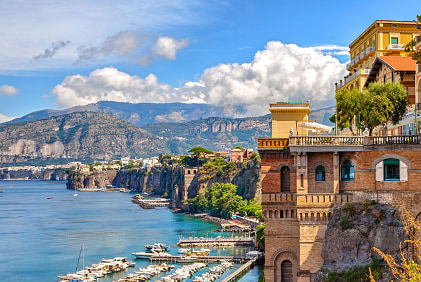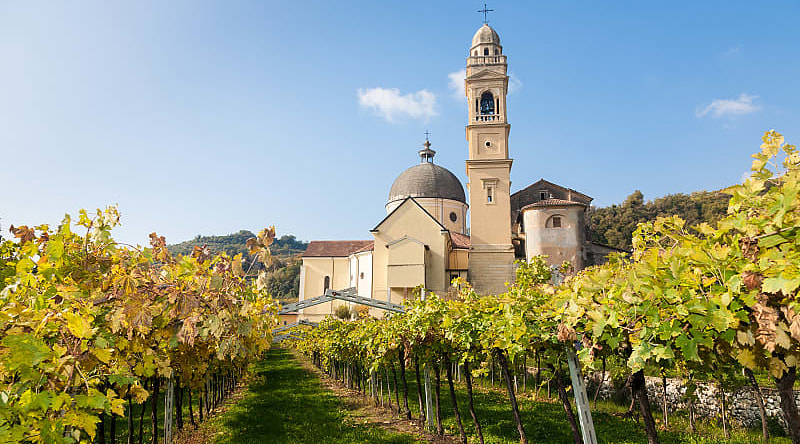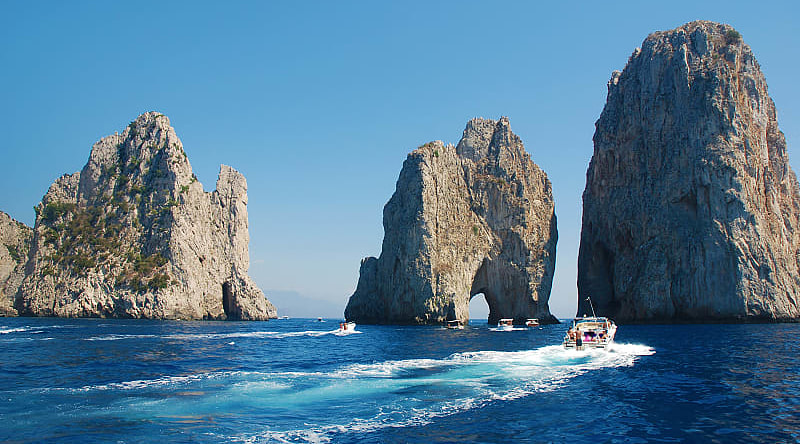If you want to immerse yourself in Italy’s wine culture without the stress of planning, a luxury Zicasso tour is the perfect solution. These expertly designed trips handle all the logistics, from transportation and accommodation to private winery appointments. This allows you to focus entirely on the experience. A curated tour unlocks a deeper, more seamless journey, providing insider access and local knowledge that turns a great vacation into an unforgettable one.
- Expert Access: Gain entry to exclusive, family-run wineries and private cellars that are often not open to the general public for a truly intimate tasting experience.
- Seamless Logistics: Forget navigating rural roads or worrying about a designated driver. All transportation is arranged for you, ensuring a safe and relaxing journey.
- Curated Itineraries: Benefit from thoughtfully planned routes that combine famous estates with hidden gems, cultural sightseeing, and exceptional culinary experiences.
- Insider Knowledge: Enjoy the company of a local guide who can bridge language gaps, share historical context, and enrich your understanding of the region's unique traditions.
- Easy Planning: Simply choose a tour that fits your interests and let our experts handle the rest, from booking accommodations to securing sought-after tasting appointments.
Can you visit Italian wineries without a tour?
You can absolutely visit Italian wineries without joining a formal tour, but it requires advance planning. Most Italian wineries, especially the smaller, family-owned estates that offer the most authentic experiences, do not have public tasting rooms with regular drop-in hours. Spontaneity is rarely rewarded and arriving unannounced will likely lead to disappointment. The culture of visiting is based on personal appointments, making a little preparation the key to a successful independent trip.
- Appointments Essential: Ask our travel specialists to contact wineries well in advance to request a tasting and tour.
- Expect Fees: Tastings are almost never free. The fee typically covers a private tour and a guided tasting of several wines, often accompanied by local bread, cheese, or olive oil.
- Driving Responsibly: Italy has very strict drink-driving laws, with severe penalties. Always have a designated driver if you plan to visit wineries on your own.
- Language Help: While many larger wineries have English-speaking staff, at smaller family estates, they may not. Learning a few basic Italian phrases or using a translation app is highly recommended.
- Confirm Location: Use GPS coordinates provided by the winery. Addresses can be vague in rural areas and wineries are often located on unmarked country roads.
Experience-Focused Wine Tours
Italy’s culture seamlessly blends wine with food, family, art, and romance, allowing for specialized tours that cater to your specific interests. Whether you are looking for a hands-on cooking adventure, a family-friendly vacation, or a romantic escape, you can find an experience that pairs perfectly with your love of wine.
- Family-Friendly Vineyards: Many Italian wineries, especially rural agriturismi, welcome children with open spaces, swimming pools, and even farm animals, making for a fun family day out.
- Romantic Wine Tours: Indulge in private cellar tours in Tuscany, enjoy sunset tastings for two overlooking the vineyards, and share a gourmet candlelit dinner at a historic wine estate.
- Wine and Cooking: Combine two passions in regions like Sicily or Emilia-Romagna, where many wineries offer hands-on classes to teach you the art of pairing local food and wine.
- Italy Harvest Season: Participate in the festive and exciting grape harvest during September and October for a truly memorable, hands-on connection to the winemaking cycle.
- Art and Culture: Visit innovative wineries that double as art galleries. They feature contemporary sculpture gardens and architectural marvels alongside their vineyards and cellars.
Italy Wine Harvest Tours
Visiting Italy during the grape harvest, from September to October, is an unforgettable experience. This is the most vital and energetic time of year in wine country, offering a unique opportunity to witness the culmination of a year of hard work in the vineyard. A harvest tour provides a festive, behind-the-scenes look at the winemaking process. It will connect you to the ancient traditions and joyous, communal spirit that define Italian wine culture.
- Festive Atmosphere: Experience the buzz and excitement that takes over the entire region, with many towns hosting lively harvest festivals with special foods, music, and local celebrations.
- Winery Action: See the cellars in full swing as grapes are brought in from the vineyards, sorted, crushed, and begin their journey of fermentation into wine.
- Unique Aromas: Engage your senses with the incredible smell of freshly harvested grapes and fermenting juice that fills the air throughout the wineries and surrounding villages.
- Hands-On Fun: Inquire about special programs that allow visitors to participate in the harvest, offering a memorable chance to help pick the grapes yourself.
- Autumn Beauty: Enjoy the stunning scenery of the vineyards as the leaves begin to change color, combined with pleasant autumn weather that is perfect for touring.
Family-Friendly Vineyards in Italy
A trip to Italian wine country can be a wonderful experience for the whole family. Far from being an adults-only activity, many Italian wineries, especially rural agriturismi, are built on a culture that embraces children and family life. These estates provide a safe and engaging environment where parents can relax and sample the local vintages while children explore, play, and connect with nature.
- Agriturismo Stays: Choose to stay at a farm estate on an Italy Tour for Families: Discovering Liguria and Tuscany. These venues often features family-friendly amenities like swimming pools, playgrounds, and opportunities to meet farm animals.
- Open Spaces: Allow kids the freedom to run and play in the vast, open areas of the countryside, far from the noise and traffic of the city.
- Special Tastings: Ask the winery if they can provide non-alcoholic grape juice, allowing children to feel included with their own special drink.
- Picnic Lunches: Pack a lunch or have the winery prepare a basket for you to enjoy a casual family picnic among the olive groves or with a view of the vines.
- Learning Experience: Turn the visit into a fun lesson, where children can see where their food comes from, learn about farming, and see impressive tractors and equipment up close.
Romantic Wine Tours in Tuscany
With its rolling hills, medieval castles, and cypress-lined lanes, Tuscany is the quintessential setting for a Romantic Italy Tour for Couples. The region offers an atmosphere tailor-made for couples, where world-class wine and food can be enjoyed in intimate and breathtakingly beautiful settings. A tour here is about creating shared memories, from a private moment in an ancient cellar to a shared glass of Chianti as the sun sets over the vineyards.
- Private Tours: Arrange for an exclusive tour and tasting for two, allowing for a personalized and intimate experience away from the crowds.
- Sunset Views: End your day at a winery with a panoramic terrace, sipping a glass of Brunello while watching the spectacular Tuscan sunset paint the sky.
- Vineyard Stays: Book a room at a luxurious wine estate or a secluded villa for the ultimate in privacy and romantic ambiance.
- Gourmet Dinners: Indulge in a candlelit dinner at a winery restaurant, where exquisite, multi-course meals are expertly paired with the estate’s finest vintages.
- Charming Villages: Stroll hand-in-hand through the cobblestone streets of romantic hilltop towns like Montepulciano or Pienza after a day of tasting.
Wine Tours for Seniors
Italy's celebrated wine regions offer a perfect vacation for senior travelers, where the philosophy of la dolce vita encourages a relaxed and appreciative pace. A wine tour can be a deeply rewarding sensory journey, focusing on comfort, cultural enrichment, and leisurely enjoyment rather than strenuous activity. With careful planning, you can explore the beautiful landscapes and taste world-class vintages in an accessible, stress-free manner.
- Relaxed Pace: Opt for itineraries that feature no more than one or two winery visits a day, allowing ample time to savor each tasting and enjoy a long, leisurely lunch without feeling rushed.
- Private Drivers: Use a private driver who provides door-to-door service, eliminating long walks from car parks and expertly navigating the countryside with ease and comfort.
- Accessible Wineries: Focus on modern estates or well-established historic properties that have been updated to include ground-floor tasting rooms, ramps, and elevators, ensuring easy navigation for all mobility levels.
- Comfortable Stays: Choose accommodations in town centers with modern amenities or single-level country suites that avoid the hassle of stairs often found in older, multi-story historic buildings.
- Cultural Pairings: Enhance your journey by combining wine tasting with other gentle and enriching activities. Tailor one of Our 7 Best Tours of Italy for Seniors to include a visit to the opera in Verona, visit a local market, or take a scenic boat tour on Lake Garda.






















